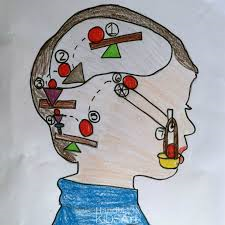By Stanley Rosenberg and Dan Hunter
Originally published in Commonwealth: Nonprofit Journal of Politics, Ideas, and Civic Life on June 1, 2019
TODAY WE MUST educate children for jobs that don’t yet exist, using technologies that haven’t been invented.
The tumultuous change on our planet, in our societies, and in our schools, presents a steep challenge to educators and legislators. How do we prepare our children for a world not yet imagined? What skills should schools teach to ensure a future for our students?
Traditionally, schools have focused on teaching knowledge. Students then practice reading, writing, and mathematical skills to understand and apply that knowledge. But today, facts and figures are available on the internet in .7 seconds or less.
Students need to continue to practice reading, writing, and mathematical skills, tools that facilitate thinking. But we need to add a new skillset for students to practice—creativity.
Creativity is a thinking skill that can be applied and learned in all disciplines and all classes, especially in STEM subjects. Creativity can also be learned in sports, history, English, and, of course, the arts. All art forms present a prime area of creative practice. Whether they’re engaged in visual or performing art, students draw on their imagination to initiate, explore, and complete an idea.
Creativity should be fostered in all disciplines, because all areas of life require creativity.
Creativity is necessary to prepare students to engage with an unknowable future, because the nature of human work is changing. More and more tasks are being relegated to computer automation. In 2013, researchers at the University of Oxford’s Martin School conducted a detailed study of over 700 US job types and concluded that nearly 50 percent of jobs can be automated, eliminating the need for a human worker.
We are facing the potential loss of human jobs similar to the disruptions of the 19th century industrial revolution. For example, Roman Stanek, the CEO of Good Data, a company that provides data analysis for about 6,000 clients, noted that “before, each [client] company needed at least five people to do this work. That is 30,000 people. I do it with 180. I don’t know what all those other people will do now, but this isn’t work they can do anymore. It’s a winner-takes-all consolidation.”
In the past, when technology made certain jobs obsolete, government and business invested in education and retraining. As far back as the 19th century, Massachusetts has been an educational leader, a commitment that the state is renewing with the current education reform debate.
In the first round of education reform in the 1990s, Massachusetts responded to business’s need for a stronger work force. We increased emphasis on reading, writing, and arithmetic, as well as funding, accountability, and standardized testing. In the process, Massachusetts raised scores and became a global education leader.
Today, when the economy demands innovation, business sees an increased need for collaborative and creative workers.
Consequently, schools must incorporate opportunities and experiences for all students to develop their creative skillsets. Developing creativity inspires curiosity, different thinking styles, a way of examining the world and, most importantly, the means to engage with others and the world.
- Make creativity integral to all classes as a state priority for PreK-12 students.
- Creative skillsets must be part of the education frameworks.
- Require by statute that the Department of Education identify, develop, and disseminate best teaching practices for creativity.
- Charge the Department of Education with the responsibility to issue a biennial status report to the Commonwealth: The State of Creativity in Massachusetts.
- Convene a series of forums with business leaders to connect education with work force development for the future and to identify necessary future skills.
Rote learning will not prepare students for an unknown future. Instead, students must be challenged with problems that require imagination to address. For example, a teacher might assign the task of designing a new high school for the next century. The assignment is necessarily open-ended. A learning task should not be like an Ikea instruction manual. If the teacher knows what the finished product will look like or he gives detailed instructions, then the students are not practicing creativity. If both the students and the teacher are unsure how the assignment will turn out, students are forced to engage with their imaginations and practice taking creative risks.
Creativity should be practiced in schools to prepare students for the unknown. They must learn to be nimble, flexible, insightful, collaborative, and creative not only to ensure individual futures, but to prepare an innovative and successful work force for the Massachusetts economy.
Stan Rosenberg is a former state senator and Senate president.





